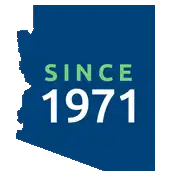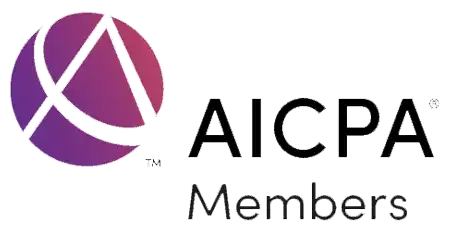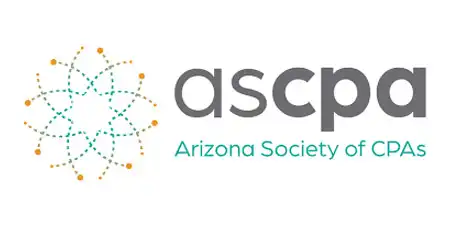Uniform Guidance: A Post-Implementation Recap
Walker & Armstrong LLP • June 16, 2017
Auditees, auditors and regulators can move forward with a more modernized accounting of federal awards, increased efficiency and an improved audit process.
Those of you who either receive or audit federally fund awards have had the opportunity to become fully immersed in the requirements of Title 2 U.S. Code of Federal Regulations Part 200, Uniform Administrative Requirements, Cost Principles, and Audit Requirements for Federal Awards (Uniform Guidance).
Issuance of the Uniform Guidance dusted off the rules and regulations from nearly two decades of trials, tribulations and experiences encountered by auditees and auditors. It also provides a refreshed look at what constitutes federally funded expenditures worthy of audit consideration within a more organized uniform framework of requirements.
Regardless of the underlying nature of the federal award recipient, whether for a state or local government, hospital, higher education or nonprofit organizations, the uniform guidance applies across the board from which all participants are reading from the same script. With more than years under our belt, now is a good time for a period of post-implementation introspection on how the “Super Circular” has lived up to its name.
Worthy of modern technology, the Uniform Guidance has been electronically codified with well-organized subparts starting with a list of acronyms and definitions, general provisions, pre-federal award requirements, post federal award requirements, cost principles, and audit requirements. Accordingly, the reader can easily navigate the Uniform Guidance and drill down to the applicable regulation with precision and efficiency.
One of the most refreshing aspects of the Uniform Guidance was the consolidation and elimination of eight separate OMB Circulars. No more trying to clarify the differences between circulars or evaluating the applicability of a myriad of circulars to individual recipient circumstances.
According to the OMB, the objectives of the Uniform Guidance were to:
- Change the focus from compliance to performance
- Eliminate conflicting and duplication of cost principles
- Provide consistent and transparent treatment of costs
- Improve and strengthen federal agency oversight
- Improve administration of federal awards from the application through the close-out process
- Provide better identification of risks associated with federal awards
- Target the audit for risk of fraud or waste
In 2013, it was estimated that approximately 5,000 nonfederal entities would be relieved of the single audit requirements due to raising the annual federal expenditure threshold to $750,000. With $600 billion dollars in federal grants awarded annually, it was time to focus on the dollars expended and provide some relief to the small recipients. An overarching objective of the OMB and federal agencies was consideration about how grant policies could be reformed to increase the efficiency and effectiveness of federal programs and eliminate unnecessary and duplicative requirements by focusing on areas that emphasize achieving better outcomes at a lower cost.
The Uniform Guidance also provides relief to the recipients in that they can elect to charge a de minimis indirect cost rate of 10% of modified total direct costs if they choose not to apply indirect costs under either the simplified or direct allocation methods. This is especially useful for not-for-profits who may not have had a federally negotiated indirect cost rate.
In addition, there were several reporting changes affecting non-federal entities under the Uniform Guidance including:
- Subrecipient amount must now be shown on the face of the schedule of expenditures of federal awards (SEFA) including the pass-through entity’s identifier number.
- Auditees may list amounts expended separately by year for multiple federal award years.
- Loan amounts from the beginning of year plus any new additions must be shown on the face of the SEFA (for loans in which the federal government imposes continuing compliance requirements) and disclosure in the notes to the SEFA of the outstanding loan balances at the end of the year.
- Notes to the SEFA must include a disclosure as to whether the non-federal entity elected to use the 10% de minimis cost rate.
- Corrective action plan must include both financial statement and compliance findings and anticipated completion date.
Another change is that the issuance deadline for the data collection form (Form SF-SAC) has been extended under the Uniform Guidance to the next business day when the deadline falls on a weekend or holiday. Federal agencies can no longer grant a waiver of the deadline and the consequences to the auditee for not meeting the deadline is a material weakness in compliance.
Criteria for a low-risk auditee had changes which require the auditee to meet all of the following conditions for each of the preceding two audit periods:
- Single audits on an annual basis (i.e. no biennial audits)
- Unmodified auditor’s opinion on the financial statements or in relation to the SEFA
- No material weaknesses identified in the report under GAGAS (Yellow Book)
- Auditor did not report a substantial doubt as to the entities ability to continue as a going concern
- No audit findings of Type A federal programs for the preceding two audit periods for (a) material weaknesses or modified opinion in the report on internal control for major programs and (b) no known or likely questioned costs
The Uniform Guidance also provides auditors with changes, including:
- $750,000 minimum threshold requiring a single audit (up from $500,000)
- $750,000 (or 3% of total federal expenditures) for Type A programs (up from $300,000)
- Type A program determination no longer considers inherent risk
- $187,500 (or 25% of Type A expenditure threshold) for Type B programs (up from $100,000)
- A need to sufficiently document basis for determining the classification of a program as low versus high-risk
- Lowered the minimum “percentage of total expenditures test” to 20% for low-risk auditees and 40% for high-risk auditees (these percentages were previously 25% and 50%, respectively)
- Must classify a program as a Type A high-risk if, in the most recent period, the auditor issued a modified opinion (i.e., material weakness) or there were known questioned costs exceeding 5% of the total of that program’s expenditures
- Raised the threshold to $25,000 for known or likely questioned cost of an audited major program or known questions costs of a non-audited federal program (up from $10,000)
- Summary schedule of prior audit findings must include both financial statement and compliance findings
As for auditor compliance testing of major programs, two of the prior general requirements under OMB Circular A-133 consisting of the prevailing wage regulations under the Davis-Bacon Act and real property acquisition and relocation assistance were removed from the compliance supplement. However, certain programs retained wage-rate requirements in the special tests and provisions section.
Recent Development.
Effective for fiscal years beginning on or after December 26, 2017, nonfederal entities are to have implemented changes to their procurement policies and procedures in accordance with sections 602-230-1040 through 602-230-1040 of the Uniform Guidance. Many nonfederal entities are finding the procurement policies and procedures requirement as noted below more restrictive:
- Documented procurement procedures that reflect federal law, Uniform Guidance standards, and any state regulations
- Focus on the most economical solution during the procurement process and avoid using federal funds for acquisition of unnecessary items
- Written conflict-of-interest policies that include restricting employees or agents from participating in the procurement process if they have an actual or apparent conflict of interest
- Must document the procurement activities including the basis for the type of procurement, contract type and basis for selection and price
- Recipient of federal awards must maintain an appropriate level of oversight
Conclusion
For auditees, the super-circular has been super challenging with the additional work necessary to update policies and procedures to comply with the revised procurement requirements and cost principles. However, on a positive note, the level of documentation for personnel time and effort reporting requirements has become more flexible.
So, looking back, did the Uniform Guidance achieve its objectives? There certainly has been a significant investment by auditors and auditees to learn and implement the new requirements. However, now empowered with this knowledge, auditees, auditors and regulators have moved forward with a more modernized accounting of federal awards, increased efficiency and an improved audit process.




